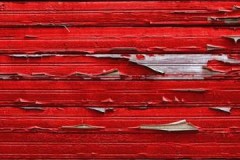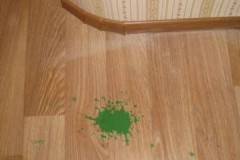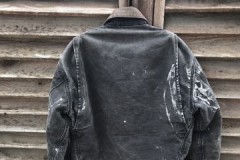The eyes are afraid, but the hands are doing, or with what it is easy and simple to wash the water-based paint
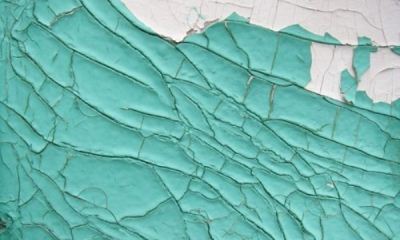 Painting is one of the most popular types of finishing work. It is easy to use water-based paint, and the effect of the repair carried out will last for a long time.
Painting is one of the most popular types of finishing work. It is easy to use water-based paint, and the effect of the repair carried out will last for a long time.
Problems often arise when it is necessary to remove water-based emulsion from surfaces and remove random stains from difficult delicate materials.
Let's figure out how to wash water-based paint from the floor, ceiling, clothes, etc.
Content
Features of washing off the coating
Water-based paint is a fast-drying solution that successfully replaces whitewash.
All water-based paints are divided into 2 main groups:
- Waterproof, indicated for use in rooms with high humidity. They are removed quite difficult - by serious mechanical or chemical action.
- Non-waterproof suitable for dry rooms. They are made on the basis of PVA and can be easily removed with soapy water.
Soapy solution or warm water
Any paint that accidentally falls on the surface of objects can be easily removed before it dries. A soapy water solution and a rag are suitable for this. The rags are lathered and quickly remove contamination.
If the stain is large, then you should act promptly, replacing rags if necessary, so as not to smudge the stain more, over too large a surface.
In other cases, the following application method is suitable, based on softening old paint. You can use not only the exiled solution, but also just warm water.
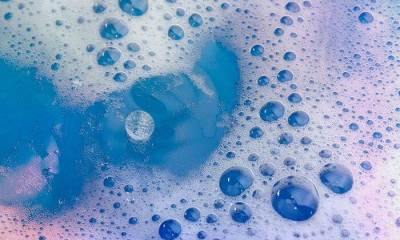 For processing, you will need to do the following:
For processing, you will need to do the following:
- Make a soapy solution of any concentration or plain warm water.
- Wet the surface abundantly with a sponge.
- Leave to saturate the layer for half an hour.
- Rinse off intensively with a cloth.
- Repeat the process if required.
- Wipe dry.
Instead of soap, you can also use washing powder to prepare the solution.
Mechanical cleaning
This method of removing the water-based coating is not suitable for all surfaces, but only for those that are resistant to intense mechanical stress. Removing the water-based composition from the surface involves the use of such inventory:
- roller;
- putty knife;
- bucket;
- brush;
- water.
Procedure:
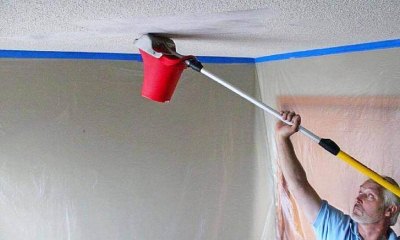 Dampen the roller in a bucket of water.
Dampen the roller in a bucket of water.- Roll over the surface to achieve good moisture.
- Leave for a quarter of an hour to soak.
- Remove the paint with a spatula. In this case, it is advisable to move the spatula in one direction.
- For areas that could not be cleaned immediately, the process is repeated.
- Particularly "stubborn" areas can be cleaned with a brush.
Solvents
Water emulsion lends itself well to removal with commercial solvents. The following can be considered as effective means:
- dimethyl chloride;
- formic acid;
- isopropyl alcohol.
Order of use:
- Apply undiluted.
- Allow about 15 minutes, until the paint starts to peel off the surface.
- Clean off.
Special means
In addition to those listed, you can use one of the special washes focused on water-based paint. They are sold in specialized departments and are completely ready-to-use.
Washing off "Manor"
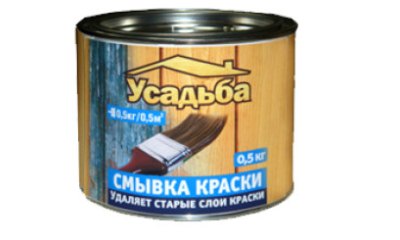 This product of domestic production is a gel-like wash water-based paint that can be used to treat various surfaces:
This product of domestic production is a gel-like wash water-based paint that can be used to treat various surfaces:
- metal;
- tree.
The principle of operation is based on the softening of the paint, the destruction of its structure and delamination.
To complete the work, you will need the following tools:
- putty knife;
- brush with natural bristles;
- bucket with water;
- rags.
Work progress:
- Apply the remover with a brush.
- Leave on for 10 to 20 minutes. The duration of exposure depends on the thickness of the paint layer and the type of coating itself.
- Remove loose paint with a spatula.
- Wash off with water.
- Dry.
Set Boya Sokucu by Marshall Boya
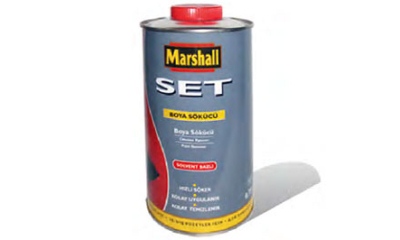 Turkey is a product suitable for removing water-based paint. It can be applied on a variety of surfaces:
Turkey is a product suitable for removing water-based paint. It can be applied on a variety of surfaces:
- concrete;
- metal;
- tree.
For work you will need:
- rags;
- putty knife;
- brush;
- cellulose solvent.
Working with a wash includes several stages:
- Apply Set Boya Sokucu with a brush.
- Withstand no more than 15 minutes.
- When the paint starts to swell, remove it with a spatula.
- If not all of the paint is removed the first time, the washing process is repeated.
- Moisten a cloth with cellulose solvent and wipe the treated surface.
This product must not be used to clean plastic.
Sander
If you need to remove a very thick dry layer of paint, it will be difficult to do without a sander. Another option is to use a drill with a special iron brush attachment.
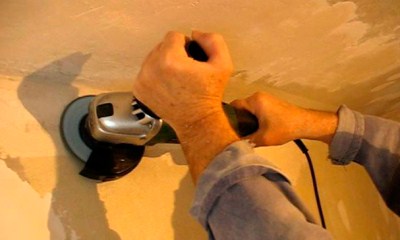 Method of work:
Method of work:
- Assemble and connect the instrument to the network.
- Carry out processing in small areas.
- As work progresses, periodically wipe the surface with a damp cloth to remove dust.
- At the end of the work, vacuum the room.
- Do wet cleaning.
This method is suitable for cleaning:
- wood;
- concrete and other surfaces.
Application of a building hair dryer
Using a special tool to remove paint requires experience. To work on removing the water emulsion, a construction hairdryer is used.
The order of work:
- Turn on the hairdryer.
- Process the space according to the plan.
- Swollen paint is removed with a spatula.
- Residues are brushed off. Or, alternatively, with sandpaper.
Features of removal from various types of surfaces
When choosing a coating removal method, the following points must be taken into account:
- surface material;
- vertical / horizontal arrangement of the plane;
- freshness of the coating;
- a layer of paint.
How to remove from the floor?
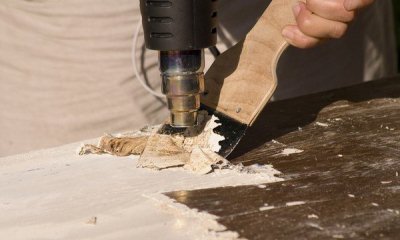 The wooden floor can be cleaned of water emulsion with a spatula or a brush with metal bristles. The disadvantage of this method is the high laboriousness of the process of removing the dye..
The wooden floor can be cleaned of water emulsion with a spatula or a brush with metal bristles. The disadvantage of this method is the high laboriousness of the process of removing the dye..
Paint strippers work faster, but not all are designed for use on wood. In order not to get into a mess, you must definitely read the instructions for the drug.
These funds are applied undiluted. Apply solvent to a rag and wipe the stain. After the paint has washed off, the area is washed with water and wiped dry.
Parquet can be cleaned using one of the following products:
- table vinegar;
- acetone;
- methyl alcohol.
Tiled floors are easy to clean. This coating allows the use of chemicals and intense rubbing with a rag.
If the floor is concrete, then a hair dryer will allow you to quickly remove the coating... Exposure to high temperatures changes the structure of the paint, leading to its softening, and such a substance is already well removed with a spatula. This process is also not fast. An alternative solution to the problem is shot blasting equipment.
How to scrub from the ceiling?
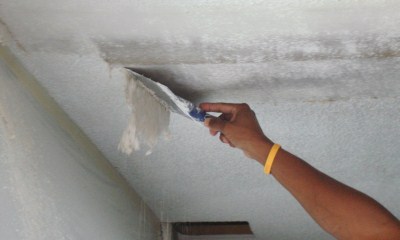 The ceiling made of plasterboard and painted with water-based emulsion is best cleaned with a chemical solvent. It is applied for 20 minutes, after which the softened paint is cleaned off.
The ceiling made of plasterboard and painted with water-based emulsion is best cleaned with a chemical solvent. It is applied for 20 minutes, after which the softened paint is cleaned off.
Even with the most careful actions performed it is recommended to complete the process by grinding the surface.
The peculiarity of drywall is the presence of cardboard, which is sensitive to intense exposure, as a result of which it can even be damaged.
How to remove from linoleum?
Fresh water-based paint stains from laminate or linoleum can be removed very well. It is enough to wipe with a wet cloth or use a soapy solution.
It will take more time to remove dried blots - the stains will have to be soaked and only then washed.
How to remove from plastic?
Like other surfaces, plastics can suffer from rough paint handling. Streaks can be removed from plastic frames with white spirit or ammonia solution... It is better to remove the paint from the glass with a special scraper.
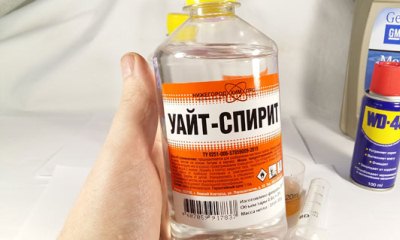 To remove paint from plastic, it is possible to use liquid glass or sealant, which, when dry, destroy the texture of the paint, and it becomes easy to remove it.
To remove paint from plastic, it is possible to use liquid glass or sealant, which, when dry, destroy the texture of the paint, and it becomes easy to remove it.
It is possible to pry off the frozen layer, observing the utmost care, with a sharp knife.
Another acceptable method is heating the surface to 60-70 ° C, if the composition of the plastic allows itand peel off when the paint starts to lag. It is not recommended to increase the temperature above the permissible level, as this increases the likelihood of damage to the plastic itself.
How to wash from clothes?
If drops of paint just got on clothes, they can be removed with paper and washed with water. In case of large stains that were not noticed immediately, it is recommended to pre-soak the clothes using washing powder for half an hour, and then wash them in the usual way.
How to clean delicate surfaces?
The peculiarity of cleaning delicate surfaces - inability to use intense chemical, thermal or mechanical stress... As a result, washing can only be carried out using warm water and a rag.
Removing paint from delicate surfaces usually takes a long time.
Recommendations
For removing water emulsion We recommend using the following tips:
- If it is necessary to remove old paint from a large area (walls, ceiling), all objects in the room should be previously covered with a film.
- Repair work should be carried out using personal protective equipment - respirator, gloves, glasses.
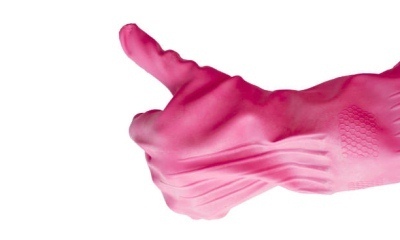 Fresh splashes and stains of water-based paint should be removed immediately and washed off with water.
Fresh splashes and stains of water-based paint should be removed immediately and washed off with water.- Pre-wetting of a surface with a water-based coating should be carried out in small areas, acting gradually.
- When repairing work, do not layer a water emulsion of one color on another color.
- It is advisable to carry out construction and repair work in the warm season, when the air temperature does not drop below + 18 ° C.
- Cheap safety glasses, which are essential especially when removing paint from the ceiling, are significantly inferior in quality and convenience to expensive models. One of their disadvantages is poor visibility, which affects the speed and accuracy of work.
Conclusion
Washing water-based paint from the surface is not as difficult as it might seem at first glance. With the right choice of method and a balanced approach to solving the problem, it is quite possible to cope with cleaning almost any surface.

